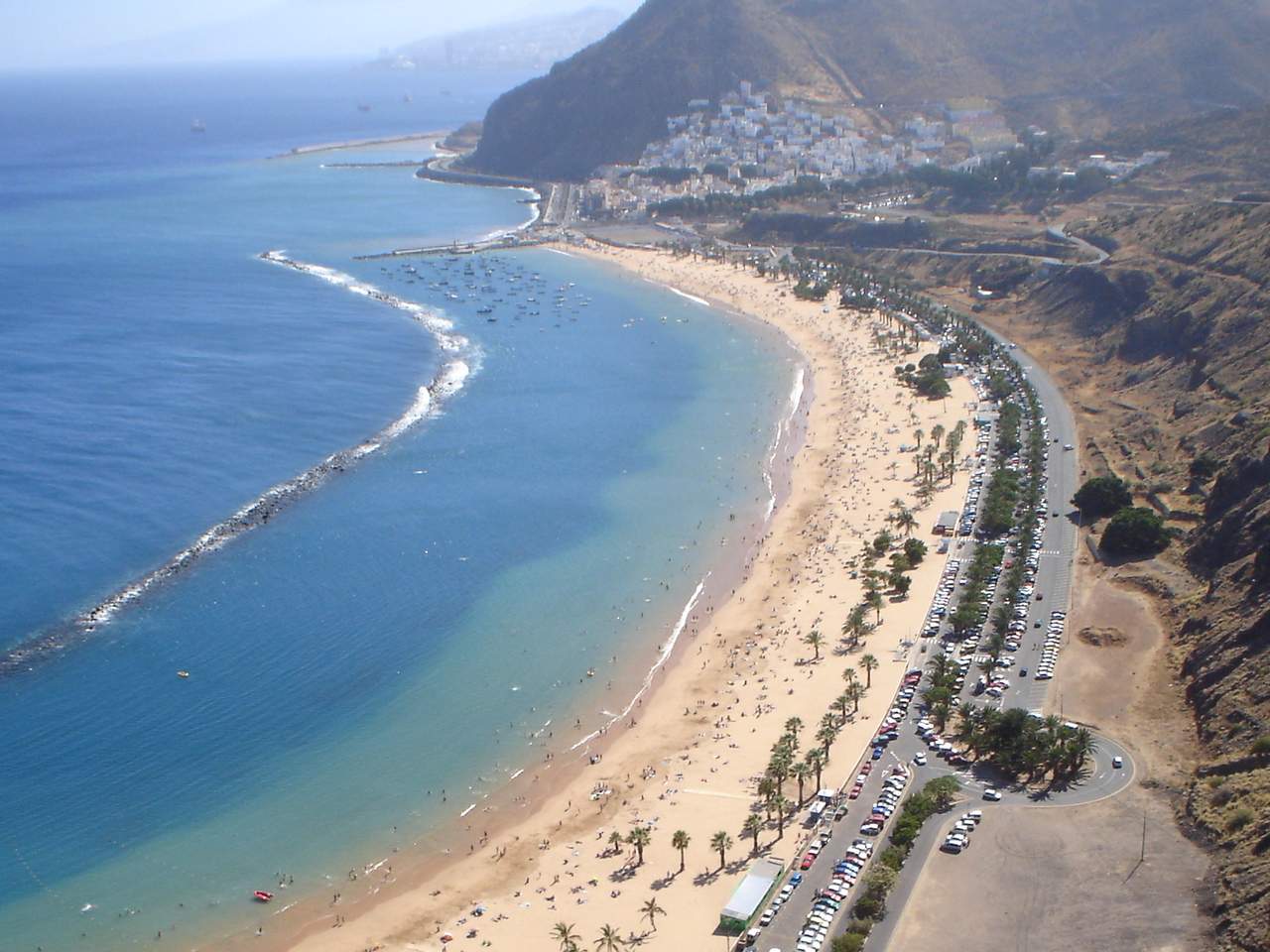Can 2 million residents of a tourist resort bear the burden of 14 million visitors a year? Try asking those who live in the Canary Islands and the answer will come sharply: no. As much as they can bring wealth and as sacred as hospitality is, in the Canary Islands they have become so exasperated that they have made a mass demonstration against tourism: 50,000 people took to the streets last April 20 in Santa Cruz de Tenerife, Las Palmas de Gran Canaria, Arrecife (Lanzarote), Puerto del Rosario (Fuerteventura), Valverde (El Hierro), San Sebastián de La Gomera and Santa Cruz de la Palma. The demonstration was for all at noon and support initiatives were also held in other European cities, the images that have bounced all over social media are impressive for the number of fierce and noisy participants.
To denounce the worsening living conditions of residents, marches in various parts of the Spanish archipelago had banners on their heads that read “Canarias tiene un límite” (The Canaries have a limit), “The Canaries are not for sale,” “We are foreigners in our own land,” and “How can I live off tourism if I don’t have a house?” The latter’s reference is to the rising cost of housing, which has been totally absorbed by the tourist rental market making it very difficult for a local family to find a home.
Tourism accounts for about 35 percent of the archipelago’s GDP of 16.9 billion euros in 2022, but residents now judge the total conversion of the economy to tourism to be no longer sustainable for society and the environment, arguing that the balance between resources and the well-being of society has broken down. Environmental groups including Greenpeace, WWF, Ecologists in Action, Friends of the Earth and SEO/Birdlife have come to the people’s side, and 11 activists from “Canarias se agota” have also been on hunger strike for several days.
The Canary Islands (an archipelago consisting of the islands of Tenerife, Fuerteventura, Gran Canaria, Lanzarote, La Palma, La Gomera, and El Hierro placed on the Atlantic about 100 kilometers from the coast of southern Morocco) enjoy a mild climate year-round, which is why they are chosen in every season. There were 6 million visitors to Tenerife in 2022 alone, and among the protesters’ demands is precisely to introduce a maximum number of tourists to be allowed in and an environmentally related purpose fee.
Of course there is also that of stopping more land consumption and housing development by putting a brake on the tourist rental market by giving a solution for residents looking for housing. The rising prices of all goods, from basic necessities to all services, showcases aspects that are viewed negatively for the population: according to the Spanish National Institute of Statistics, 33.8 percent of people in the Canary Islands are at risk of poverty or social exclusion. And to say that before they became a tourist phenomenon (the expression “I’m going away to the Canaries” renders well the role they had carved out for themselves in the collective imagination as the place of affluence where one could spend one’s entire life on vacation), the Canaries were fishing islandswith a continuous emigration to the continent of its inhabitants seeking work.
Tourism has been the winning model of development for decades but now this same model seems to have entered a crisis: those who used to give thanks for the groups of British, Germans or Italians in the resorts now find themselves denouncing water emergencies because of tourists. Increased water in urban and receptive areas deprives the rest of the islanders of drinking water. In fact, the spokesman for the Canarias se Agota (Canary Islanders have had enough) collective, Víctor Martín, who is helping coordinate the protests, said, as reported by Agi, that the climate emergency was leading to cuts in water supplies: “The demand for water is increasing in urban areas where there are more tourists. We have had a very dry winter and a water emergency has already been declared in Tenerife, there will be restrictions if it doesn’t rain more this month, but here right now it is 36°C. This is unsustainable and means that we will not even be able to maintain normal levels of tourism. Yet the authorities and businesses here are trying to stick to this model.”
The protests are not directed in general at tourism, which is the sector that underpins 35 percent of the Canary Islands’ economy and employs 40 percent of the archipelago’s workers, but against its excesses and the problems that many of the archipelago’s residents face despite the increase in visitors. Salaries in the Canaries are among the lowest in Spain (the average salary is 1,630 euros a month) and the unemployment rate is the third highest in the country, at 16.2 percent according to the most recent data. Of Spain’s 17 autonomous communities, the Canary Islands ranks fourth for prices per square meter for rental housing.
“The problem is not tourists,” says Víctor Martín further, “It is a model built around, and with the connivance of, a business class that does not want to listen to what needs to be done, and with a political class that serves that business class instead of serving all citizens. ”What we are asking for is very simple: since tourism is the main economic activity and the cause of all these problems, we want an immediate stop to these two megaprojects," he said referring to the Tenerife developments.
Pictured is a beach in Tenerife
 |
| Tourism is making life difficult for Canary Islanders |
Warning: the translation into English of the original Italian article was created using automatic tools. We undertake to review all articles, but we do not guarantee the total absence of inaccuracies in the translation due to the program. You can find the original by clicking on the ITA button. If you find any mistake,please contact us.